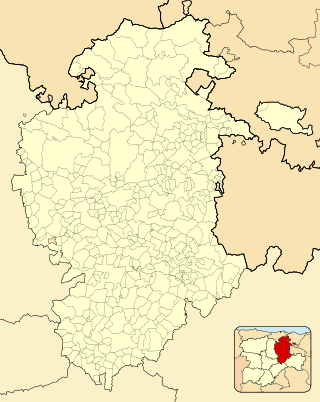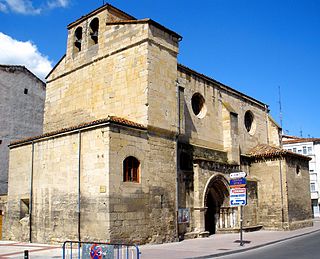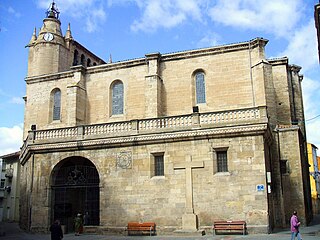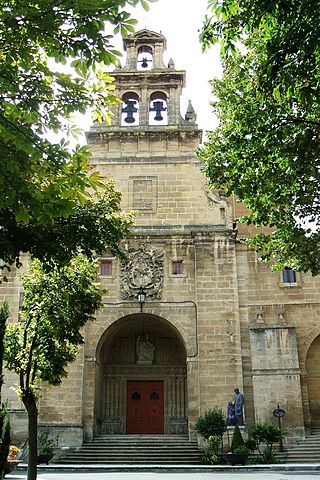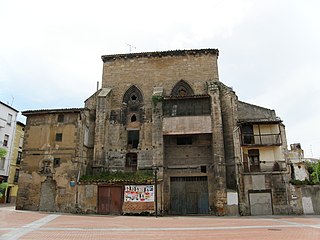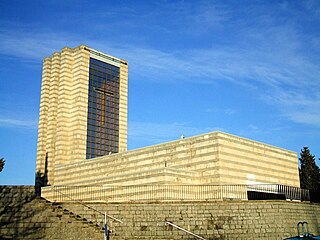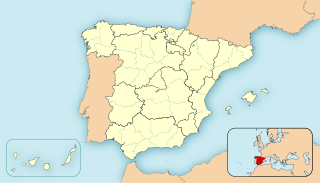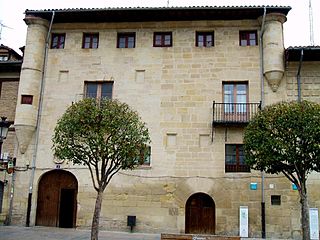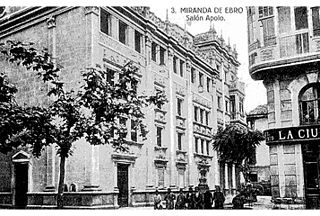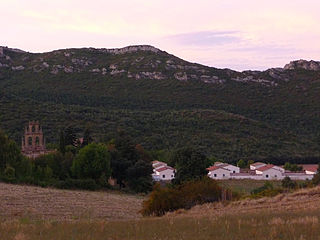12 Sights in Miranda de Ebro, Spain (with Map and Images)
Legend
Welcome to your journey through the most beautiful sights in Miranda de Ebro, Spain! Whether you want to discover the city's historical treasures or experience its modern highlights, you'll find everything your heart desires here. Be inspired by our selection and plan your unforgettable adventure in Miranda de Ebro. Dive into the diversity of this fascinating city and discover everything it has to offer.
Sightseeing Tours in Miranda de Ebro1. Campo de concentración de Miranda de Ebro
The Miranda de Ebro concentration camp was a Francoist concentration camp located in the city of Miranda de Ebro, province of Burgos (Spain). It was created in 1937, with the advice of the Nazi SS, to house Republican prisoners and remained open until 1947, being the camp for the longest time open and the last to be closed in Spain.
Wikipedia: Campo de concentración de Miranda de Ebro (ES), Website
2. Iglesia del Espíritu Santo
The Church of the Holy Spirit, historically known as the Church of San Nicolás, is a predominantly Romanesque Catholic church located in Miranda de Ebro, province of Burgos, Castile and León, Spain.
Wikipedia: Iglesia del Espíritu Santo (Miranda de Ebro) (ES)
3. Iglesia de Santa María
The church of Santa María, or Santa María de Altamira, in the town of Miranda de Ebro is a Catholic temple built in the sixteenth century in Renaissance style with elements of late Gothic art. It is located in the heart of the historic center of the city next to the Apolo Theater and stands out for its robustness, which gives it the appearance of a fortress.
4. Iglesia de los Sagrados Corazones
The church of the Sacred Hearts in the town of Miranda de Ebro is a Catholic temple that dates back to the sixteenth century and is located in the old Convent of San Francisco. It is a temple built in Renaissance and Baroque style, where the belfry on the façade of the church stands out.
Wikipedia: Iglesia de los Sagrados Corazones (Miranda de Ebro) (ES)
5. Puente Carlos III
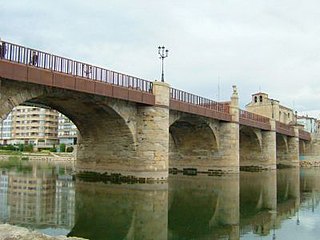
The Carlos III Bridge is a bridge in Miranda de Ebro (Spain) that crosses the Ebro River, between Aquende and Allende. It is located between the so-called English or Iron and French bridges. The original Miranda bridge was destroyed by a very strong flood in 1775. It was a strategic point in the north of the country and was an obligatory passage of the Ebro under toll.
6. Antigua Iglesia de San Juan
The Church of San Juan Bautista, commonly known as the Church of San Juan, is an old temple of Catholic worship and predominantly Gothic style located in Miranda de Ebro, province of Burgos, autonomous community of Castile and León, Spain. Its current state is one of ruin.
7. Iglesia de Nuestra Señora de los Ángeles
The church of Nuestra Señora de los Ángeles de Miranda de Ebro is a parish church of Catholic worship built to provide religious service to the inhabitants of the Miranda neighborhood of Los Angeles, separated from the urban center by the Bayas River, on the road to Logroño.
Wikipedia: Iglesia de Nuestra Señora de los Ángeles (Miranda de Ebro) (ES)
8. Cabriana
Cabriana is an archaeological site that is currently part of the municipality of Comunión, which is located in the municipality of Lantarón, in the province of Álava, Basque Country, and the municipality of Miranda de Ebro, province of Burgos, Castile and León (Spain).
9. Cruz de Motrico
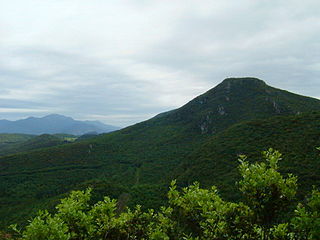
The Cruz de Motrico, or Monte Motrico, is a mountain in the province of Burgos located in the vicinity of Miranda de Ebro (Spain). It belongs to the mountain system of the Obarenes Mountains and has an altitude of 851 m above sea level. The foot of the mountain is located at 594 meters, so the difference in altitude rises to 257 meters.
10. Casa de los Urbina
The House of Urbina is a noble palace of the 16th century, of urban nature and Gothic style, located in the Spanish village of Miranda de Ebro, in the province of Burgos. From a window of its rear facade, which gives the Ebro riverbank, the "resurrection of the hype" is carried out every year, taken from the waters of the river, a symbolic act with which the festivities of San Juan del Monte begin.
11. Teatro Apolo
The Apollo Theater is the main theater of Miranda de Ebro, (Burgos), Spain. It is located in the historic center of the city, next to the church of Santa María. Built in 1921 and in a state of ruin since 1987, it was rehabilitated and reopened in 2015.
12. Santa María de Herrera
The monastery of Herrera, currently known as Yermo Camaldulense de Nuestra Señora de Herrera, is located in the Obarenes Mountains, near Herrera, in the municipality of Miranda de Ebro, Burgos (Spain). It is close to the borders with La Rioja and Álava, and is located 11 km southeast of Miranda and 16 km northwest of Haro. It belonged jurisdictionally to Haro until one of the provincial divisions when it was associated with the province of Burgos.
Share
How likely are you to recommend us?
Disclaimer Please be aware of your surroundings and do not enter private property. We are not liable for any damages that occur during the tours.
